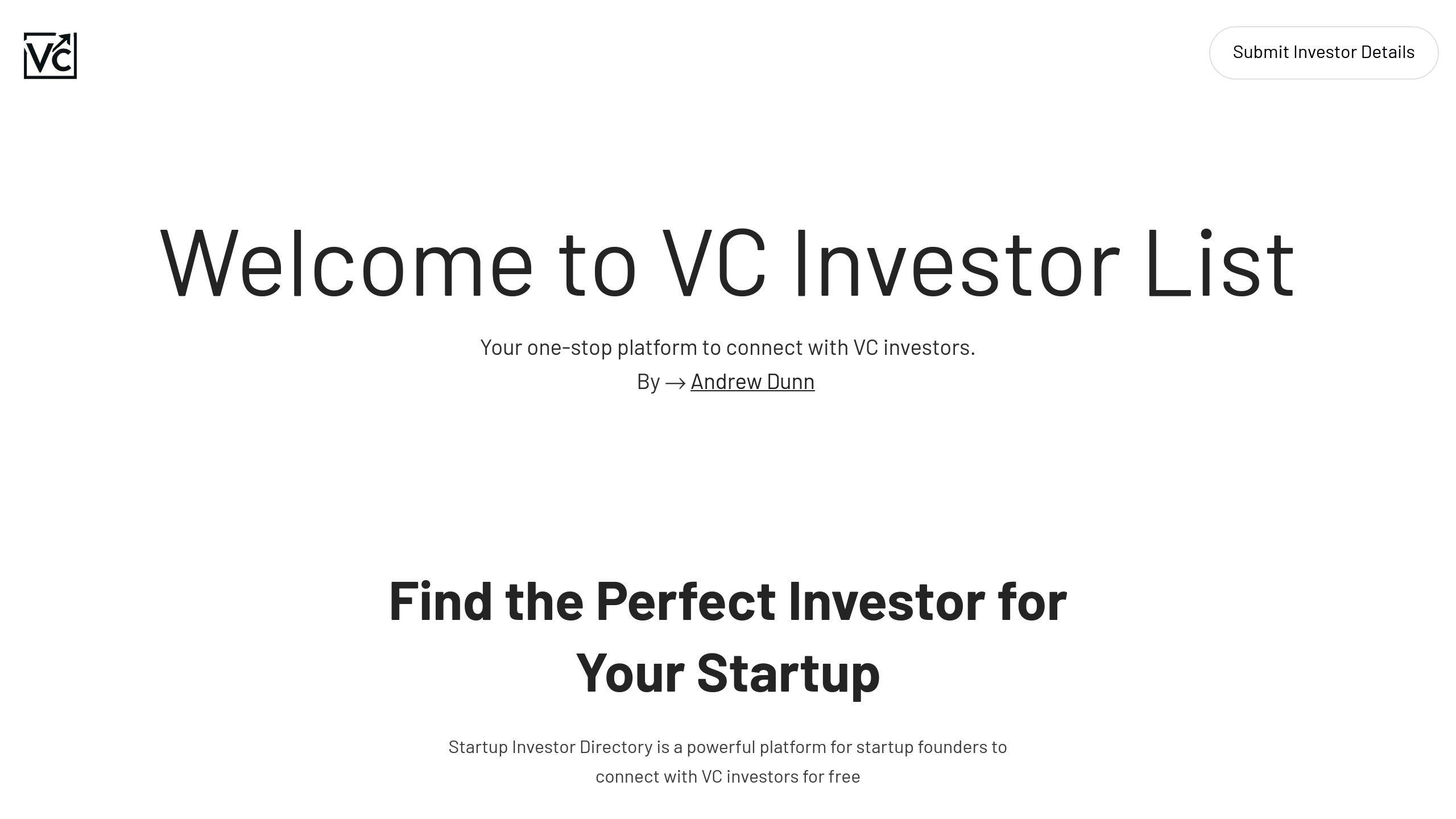Exit risk is the uncertainty around how and when investors will see returns, such as through IPOs or acquisitions. For startups, understanding and managing this risk is crucial to securing funding and aligning with investors. Here's a quick breakdown:
- Exit Strategies: IPOs offer high returns but come with volatility; acquisitions provide liquidity but may involve cultural challenges; mergers drive growth but risk integration issues.
- Investor Alignment: Discuss exit timelines, strategies, and return expectations early to avoid conflicts.
- Market Analysis: Track trends, competitors, and historical exit data to time your exit effectively.
- Startup Readiness: Ensure scalable operations, clear financial projections, and a strong business model.
- Risk Mitigation: Diversify your investor base, prepare for multiple scenarios, and maintain financial stability.
Quick Comparison of Exit Strategies
| Strategy | Pros | Cons |
|---|---|---|
| IPO | High returns, visibility | Regulatory hurdles, volatility |
| Acquisition | Immediate liquidity | Tough negotiations, culture clashes |
| Merger | Growth opportunities | Integration difficulties |
Understanding Exit Risk and Its Importance
What Is Exit Risk?
Exit risk refers to the uncertainty surrounding a business's ability to deliver returns to investors through an exit. It requires carefully balancing stakeholder interests, market conditions, and timing. Grasping exit risk is key to crafting strategies that meet investor expectations.
Common Exit Strategies Explained
To handle exit risk well, founders need to weigh the advantages and challenges of each exit strategy:
- IPO: Offers high returns and increased visibility but comes with regulatory hurdles and market volatility.
- Acquisition: Provides immediate liquidity, though it often involves tough negotiations and potential culture clashes.
- Merger: Opens the door to growth but can lead to integration difficulties.
Why Founders Need to Evaluate Exit Risk
Assessing exit risk helps founders align with investor expectations, reduce potential conflicts, and prepare for market opportunities. Fundingsage explains:
"A well-defined exit plan provides a structured approach for mitigating risks, ensuring that stakeholders have a contingency in place if the business doesn't perform as expected".
The collapse of Theranos is a cautionary tale, showing how misaligned expectations and lack of transparency with investors can lead to disaster. Addressing exit risk early builds trust with investors, secures funding, and avoids major pitfalls.
Key steps to consider:
- Be transparent: Keep investors informed and aligned on exit goals.
- Plan for contingencies: Evaluate market conditions and prepare backup plans.
- Track performance: Identify indicators that signal the right time for an exit.
Clear communication about exit expectations is essential. Founders and investors should agree on:
- The expected timeline for an exit
- Preferred exit strategies
- Minimum acceptable returns
- Conditions that would prompt an exit decision
Staying informed about market trends, conditions, and competitor actions can help pinpoint the right moment to exit.
Analyzing Market and Industry Factors
How to Analyze Market Trends
To understand market trends, you need to keep an eye on industry growth rates, new technologies, and regulatory updates. For instance, government policies in renewable energy can have a big impact on exit opportunities. Similarly, reports from the National Institutes of Health are a great resource for healthcare startups looking to spot trends and innovations that could shape their future. Knowing these trends helps you evaluate your competitive standing and pinpoint potential exit paths.
Evaluating the Competitive Landscape
A solid competitive analysis looks at your direct competitors' market share and growth, the changing models of indirect competitors, and recent exits in your space. This can help you spot potential buyers or partners for a merger.
"An exit strategy without a comprehensive risk assessment is akin to navigating a ship without a compass."
Faster Capital emphasizes this point. Looking at how competitors have exited the market can give you useful insights, while historical data provides clear benchmarks to fine-tune your strategy.
Using Historical Exit Data
Historical exit data is a goldmine for understanding valuation multiples, the typical time it takes to exit, and what makes exits successful in your industry. Focus on recent examples in your sector - they’re the most relevant for today’s market. This data can help founders set realistic goals and figure out the best timing for an exit.
Key factors to pay attention to include:
- Industry-specific exit multiples
- Average time from founding to exit
- Shared traits of successful exits in your field
M&A and IPO are NOT Startup Exit Strategies
Assessing Your Startup's Exit Readiness
Making sure your startup is ready for an exit is key to meeting investor expectations and seizing market opportunities when they come your way.
Reviewing Your Business Model
Your business model is the backbone of your exit strategy. Take a close look at customer retention, revenue growth, and operational efficiency to show that your business can scale and grow over time. Consider factors like market size, how efficient your operations are, the scalability of your technology, and how diverse your revenue streams are. These elements will help demonstrate that your business is primed for a successful exit.
Once you've confirmed that your business model is scalable, the next focus should be aligning your financial projections with what investors expect.
Checking Financial Projections
Getting your financial projections right is crucial for attracting investors and planning a smooth exit. Use a mix of valuation methods to get a complete picture, such as:
- Discounted Cash Flow: To estimate future cash flows.
- Comparable Company Analysis: To benchmark against similar businesses.
- Market-Based Approaches: To factor in current market trends and conditions.
A solid financial outlook sets the stage for choosing the best exit options for your startup.
Identifying Buyers or IPO Potential
Deciding on the right exit path - whether it's selling to a buyer or going public - depends on your market position and growth potential. When evaluating options, focus on:
- Market Position: Understand your competitive edge and share of the market.
- Financial Health: Look at key metrics like profit margins and revenue growth.
- Strategic Fit: Identify buyers who could benefit from your technology or market presence.
These steps will help you zero in on the most promising exit strategy for your startup.
sbb-itb-8981daa
Researching Investors for Exit Alignment
Looking Into Investors' Track Records
Reviewing an investor's past performance can give you a clear picture of their approach to exits. Pay attention to details like:
- Average holding period before they exit investments
- Success rate with companies in your industry
- Exit types they've achieved (like IPOs or acquisitions)
- Return on investment targets they typically aim for
These insights can help you anticipate how they might handle your company's exit. For instance, if an investor has a history of successful mergers and acquisitions in your sector, chances are they'll lean toward similar outcomes for your business.
Understanding Investors' Exit Goals
Aligning on exit goals upfront is key to avoiding friction down the road. A recent study highlights that 80% of venture capital firms prioritize exit planning when deciding on investments. This makes it essential to discuss topics like:
- Preferred exit paths (e.g., IPO, acquisition, or secondary sale)
- Expected investment timelines
- Target return multiples
- Risk tolerance
Be proactive in these discussions during your meetings to ensure your vision aligns with theirs.
Using VC Investor List to Find Investors

Finding the right investor can minimize exit-related challenges, and tools like VC Investor List can simplify the search. This platform lets you filter investors based on specific criteria, such as:
| Criteria | Why It Matters |
|---|---|
| Investment Stage | Indicates their expectations for exit timing |
| Industry Focus | Reveals their expertise in your sector |
| Geographic Location | Influences the range of exit opportunities |
Take advantage of the platform's free access to research investors who have experience with exits that match your business model or industry. This can save time and help you focus on those most likely to support your goals.
Planning to Reduce Exit Risk
Reducing the risk of a poorly timed or unsuccessful exit requires thoughtful planning and staying attuned to market dynamics. Building on steps like aligning with investors and studying market trends, these strategies help lower risks through careful preparation.
Diversifying Your Investor Base
Having a mix of investors can give you more options when planning your exit. Early-stage venture capitalists (VCs) help drive growth, strategic investors can unlock acquisition opportunities, and late-stage investors provide support for long-term goals. This approach has shown success in reducing risks and boosting returns across various sectors.
While diversification strengthens your position, being ready for different scenarios ensures you can handle unpredictable market shifts.
Preparing for Multiple Scenarios and Timing Flexibility
Combining internal readiness with the ability to adjust your timing is key to effective exit planning. Here's what that looks like:
Internal Readiness:
- Keep financials stable to navigate market ups and downs.
- Build connections with potential buyers.
- Establish alternative funding sources as a backup.
- Regularly assess your company's valuation.
Timing Flexibility:
- Track industry trends and competitor valuations to spot the best exit opportunities.
- Maintain strong financial performance to give yourself more time if needed.
- Build strategic relationships well before you need them.
"Planning your exit is a good business strategy whether you intend to sell your business or not." - Entrepreneur Contributor
The 2021 acquisition of Slack Technologies by Salesforce is a great example of how waiting for the right market conditions can pay off. Success often comes from a mix of thorough preparation and the ability to adjust to changing circumstances. By staying flexible while keeping your goals clear, you can set your startup up for a strong exit when the timing aligns.
Conclusion: Steps to Manage Exit Risk
Managing exit risk effectively requires careful planning and consistent evaluation. It's about understanding the factors that influence your exit and taking proactive steps to address potential challenges.
What Influences Exit Success?
Both external and internal factors play a role. External factors, like market trends and industry conditions, determine timing and opportunities. Internally, your company’s financial health, operational capacity, and governance structure must be in top shape.
Key Elements of Exit Risk Management
To build a solid strategy, focus on these three areas:
1. External Factor Analysis
Keep an eye on market trends and industry shifts. Study your sector’s competitive landscape and review historical patterns to better anticipate the right timing for an exit.
2. Internal Readiness Assessment
Ensure your business is prepared. This means maintaining strong financials, scalable operations, and clear governance structures. Regular assessments can help identify and address potential weaknesses before they become issues.
3. Strategic Investor Alignment
Aligning with the right investors is critical. Look for investors who understand your vision and timeline. Tools like VC Investor List can help identify those with relevant experience and successful exits in your industry.
Risk Mitigation Strategies
Staying prepared means addressing risks head-on. Here's a quick breakdown of common risks and how to manage them:
| Risk Category | Mitigation Strategy |
|---|---|
| Market Risk | Diversify your product or service offerings |
| Financial Risk | Keep strong cash reserves |
| Operational Risk | Build scalable processes |
| Legal/Regulatory Risk | Conduct regular legal reviews |
Exit planning isn’t a one-time effort - it’s an ongoing process. By staying adaptable, keeping your financials in order, and fostering relationships with potential buyers, you’ll be better positioned for success. The goal is to stay alert to risks and ready to seize opportunities when they come your way.
FAQs
What are the exit opportunities for venture capital?
Venture capital exits usually come in four forms: IPOs, acquisitions, secondary sales, and buybacks. Each option has its own set of challenges, like market swings for IPOs or integration hurdles for acquisitions. Picking the right path means aligning with investor expectations and keeping an eye on market trends.
Here are a few things to keep in mind:
- Market Conditions: The state of the market plays a big role in exit success. For example, IPOs might not be ideal during an economic slump, making acquisitions a more practical route.
- Company Maturity and Investor Goals: The stage of your startup and its financial health shape your exit options. Companies with strong financials and scalable operations have more flexibility. Tools like VC Investor List can help you find investors with similar exit strategies.
- Risk Assessment: Each exit strategy comes with its own risks. IPOs are subject to market volatility, while acquisitions may bring challenges like merging operations. A thorough risk analysis and clear communication with investors are essential.
Planning for a successful exit often takes 5-7 years. Staying flexible and aligned with market conditions and investor goals can help founders achieve the best possible outcome.


